As a special bonus post, Sr Mary Stella McNamee, icon writer of the Monastery of Our Lady of Hyning, has offered a meditation on icon writing for the Art and Monasticism symposium.
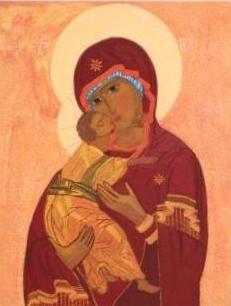
Icons and theology are intricately linked, for the icon should express the mystery of Christ, or of a saint, in line and colour.
The composition of the drawing is based on geometric shapes, particularly the circle and the triangle. The colours used for the garments of Jesus are the earthy red inner garment for his humanity and his blue cloak for his divinity. The gold of his halo reminds us of God’s presence.
In this halo is a cruciform shape with the Greek letters for ‘I am who am’. These letters teach us that Jesus is the same Lord revealed to Moses. His initials are very important as the icon is not an icon until it receives his name, as in baptism.
Icons are therefore written theology. In the early church, theologians would collaborate with artists to create a model icon for the expression of a particular mystery. This model, or prototype, ensured that the icon expressed the Church’s theology and not just the personal whim of the painter.
The icon painted in prayer is no longer just a picture but an opening onto the heavenly face/presence of Christ. The icon looks at you and draws you into His presence and transforms you. The one who writes the icon should prepare herself through prayer and fasting before starting to paint.
When I paint I try to be in the presence of the one I am painting. At this moment I am completing an icon of the Good Shepherd. As I paint I am aware of the double symbol: Jesus the Good Shepherd is carrying a lamb on his shoulders. This image recalls for me in Eastertide that He is not only the Shepherd, but He is also the slain Lamb who poured out His blood for us.
I came to write icons when a French sister of our Order taught me the basics of one of the Russian schools of icon writing. When I came to Hyning Monastery five-and-a-half years ago I was asked to open an art room in an old barn. At the same time I was sent on a course to learn how to write icons. On the course I began to write an icon of Michael the Archangel. When I returned home I completed the icon, and decided to write a simple icon of Our Lady.
This process drew me into the mystery of the divine presence in an icon. The mystery of the Transfiguration fascinated me, so I decided to write an icon for it. I took this icon on retreat more as something to do, but I was challenged to make the icon itself my retreat. I had great difficulty with the mountains as they lacked luminosity, and I had to re-write them three times. (In icons, the mountains are the “locus” of God, and are where one is transformed.) Finally, after what seemed like a great deal of blood, sweat, and tears, I got them illuminated, and I seemed to have spiritually climbed the Mount of Tabor myself.
My practice of icon writing has taught me that icons allow you to penetrate and live the Gospel in a transforming way. Each one is a journey inwards.
Sr Mary Stella McNamee is a Bernardine Cistercian nun of the Monastery of Our Lady of Hyning in Carnforth. She founded her monastery’s icon studio, where she practices and teaches icon writing.
_______________
Image credit: Hyning Icon Studio (used with permission)

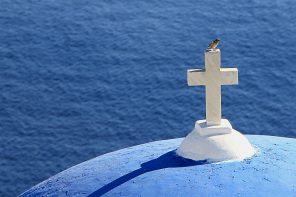
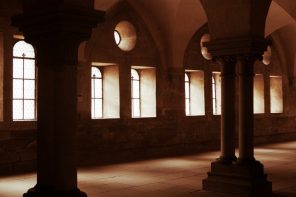
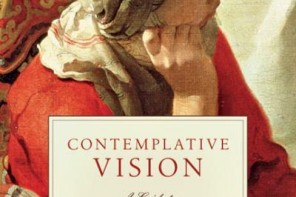
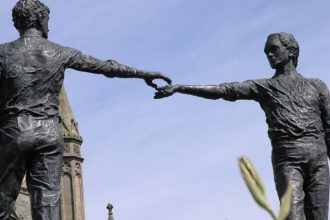
This was great insight to the practice of writing icons. Thank you.
Glad you enjoyed it, Ryan! I’ll pass your comment on to Sr Mary Stella.
This is wonderful!
Thank you so much for posting this. I regularly find myself having to defend the intrinsic value of these types of art from people with an evolutionist or “realist” conception of pictorial art who consider icons as primitive or basic, reducing their intrinsic value to a stage of development.
It is really beautiful to read your first-person experience about it. The making process of a piece of art is often excluded from the consideration of the piece itself, but that can’t be done with art that is an image of cult.
Thank you again.